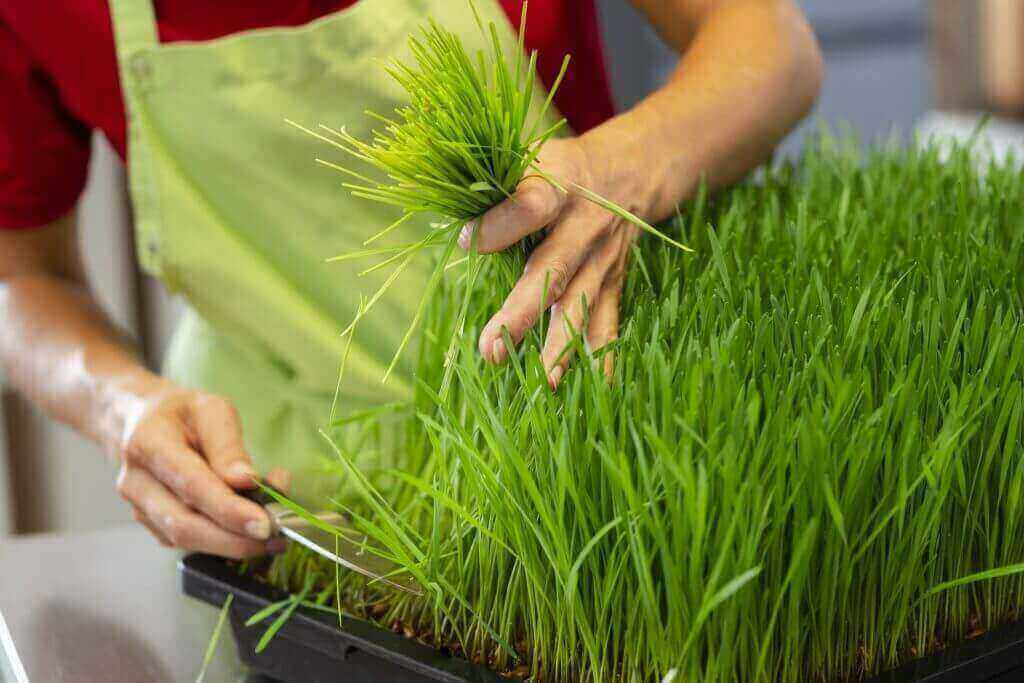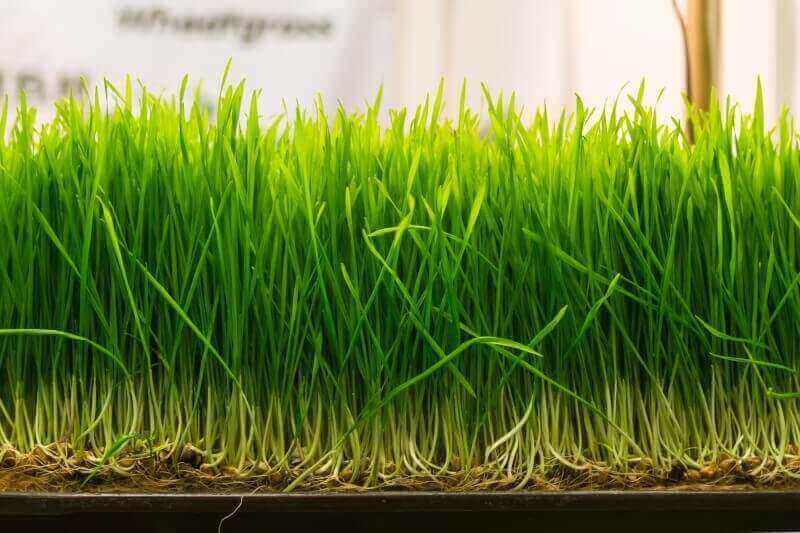Wheatgrass microgreens gaining popularity. In recent years an increasing number of people have heard about the nutritional benefits of microgreens. Basically microgreens contain the same nutrients as their fully grown counterparts but in a more concentrated form, meaning they can be even more beneficial to health than regular vegetables.
Wheatgrass Microgreens
Just like wheatgrass, microgreens wheatgrass is becoming popular for its nutritional benefits. Whilst some people experience side effects, such as slight headaches or nausea from eating microgreen wheatgrass, that generally happens from either eating too much or too soon after a meal.
Whilst there is no doubt microgreen wheatgrass can be beneficial, it does not mix well with other foods and so it’s best to eat them an hour after your meal allowing the meal time to digest. Also these microgreens are powerful and so should not be over used.
How Do You Use Wheatgrass Microgreens?
Use wheatgrass microgreens in poultices, tea and a variety of other ways. It is usual for microgreen wheatgrass to be an ingredient in a juice or smoothie. However, remember that this is not orange juice that you can drink 8oz at a time. Drink only 3oz or the equivalent of 2 shots at a time.
There are people who do not like the microgreen wheatgrass’s distinct green color or even its taste. You can mix with other fruit in a juice and still provide the same nutrition.
Does Wheatgrass have Selenium?
Selenium is in microgreen wheatgrass. Selenium is toxic if you consume in large quantities, however it is essential for human health. Selenium is a non-metal element that is in soil but is also in some plants that depend on it for their healthy growth.
Today selenium is in baby foods and as health supplements. Scientists recommend no more than 400 micrograms per day for an adult. The human body will normally get sufficient selenium through regular food products. Deficiencies are rare but low levels have been associated with Crohn’s disease and HIV.
What Do Wheatgrass Microgreens do to the Body?
As well as containing selenium, wheatgrass also contains vitamins A, C, E, K, and B complex, iron, magnesium, calcium, enzymes, phytonutrients, chlorophyll, proteins and 17 amino acids which combined can provide an abundance of health benefits:
Eliminate Toxins – By supporting a healthy liver function and assisting in detoxing the body, chlorophyll can improve health and increase energy levels.
Help Digestion – The enzymes in microgreen wheatgrass can assist in breaking down foods to enable easier absorption of nutrients. Microgreen wheatgrass can also help relieve gas, abdominal discomforts and other digestive issues such as irritable bowel syndrome.
Boost Metabolism – As wheatgrass is a nutrient dense food which has no fat and is low in calories, it is helpful in diets as it makes the dieter feel fuller for longer, reducing the cravings for more food intake.
Lower Cholesterol – Wheatgrass is known to help lower cholesterol which can help in reducing heart disease.
Boost the Immune System – Wheatgrass enhances the immune system which in turn helps to ward off illness and promote recovery.
Lower Blood Pressure – Chlorophyll is known to be similar to hemoglobin which means it can increase the blood cell count and thereby normalize blood pressure. It is also thought that chlorophyll can improve blood circulation and assist in purifying the blood.
Improve Cognitive Function – By generally improving mental function wheatgrass can assist with Alzheimer’s disease, increase hand-eye co-ordination and help prevent memory loss.
Help with Diabetes – Some of the compounds found in wheatgrass have shown to be similar to insulin and so improve blood sugar levels.
Help with Arthritis –The anti-inflammatory properties present in wheatgrass can assist in relieving the inflammation, pain and discomforts associated with arthritis.

Does Wheatgrass Need Sun?
Although many plants need a lot of sunlight or other light to grow healthy, wheatgrass microgreens do not really require sunlight. However, sunlight will allow their leaves to become far greener. What is essential for microgreen wheatgrass to grow healthy is heat and moisture.
To grow wheatgrass microgreens you will have to provide them with warmth and a good airflow. As wheatgrass is susceptible to mold, careful control of the airflow will help to protect against mold, especially if they are kept in a temperature between 60 and 75 degrees Fahrenheit.
Is Wheatgrass Mold Dangerous?
Although there are other molds which have been associated with wheatgrass, the most common mold which affects it is known as ‘blue fuzz’ slime mild. This blue fuzz mold is classed as non-pathogenic which means it cannot harm the human body. This common mold however is easy to spot and equally easy to wash off. Wheatgrass is less likely to be affected by mold if good quality seeds are used, like those available from Todd’s Seeds.
Whilst other molds that affect wheatgrass are rare, they may be more harmful, however these molds will destroy the wheatgrass making it visibly inedible.
How Can You Tell Wheatgrass Has Gone Bad?
Apart from having a distinctly different odor, wheatgrass has gone bad if it is yellow or brown in color instead of green. Of course though, the wheatgrass will be even greener if it has had access to sunlight but even without light the wheatgrass should be green.
Summary
Whilst regular wheatgrass has many benefits nutritionally, microgreen wheatgrass is even more nutritious. Microgreen wheatgrass is easy to grow and can be harvested in as little as 10 days from the seeds being sown.
To avoid the wheatgrass being affected by mold, good quality seeds should be used and they should be provided with controlled air and moisture supply. As well as providing high quality seeds Todd’s Seeds can also provide more comprehensive planting instructions.
Whilst being nutritional and tasty as a juice or smoothie, be careful not to drink it in large quantities as that could cause unwanted side effects.
You can also watch the video version of this article below.
Subscribe to our channel for more gardening and sprouting videos: Todd’s Seeds Youtube Channel


You must be logged in to post a comment.